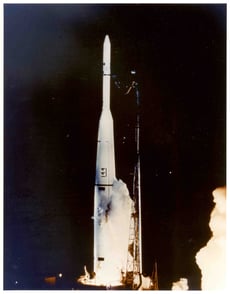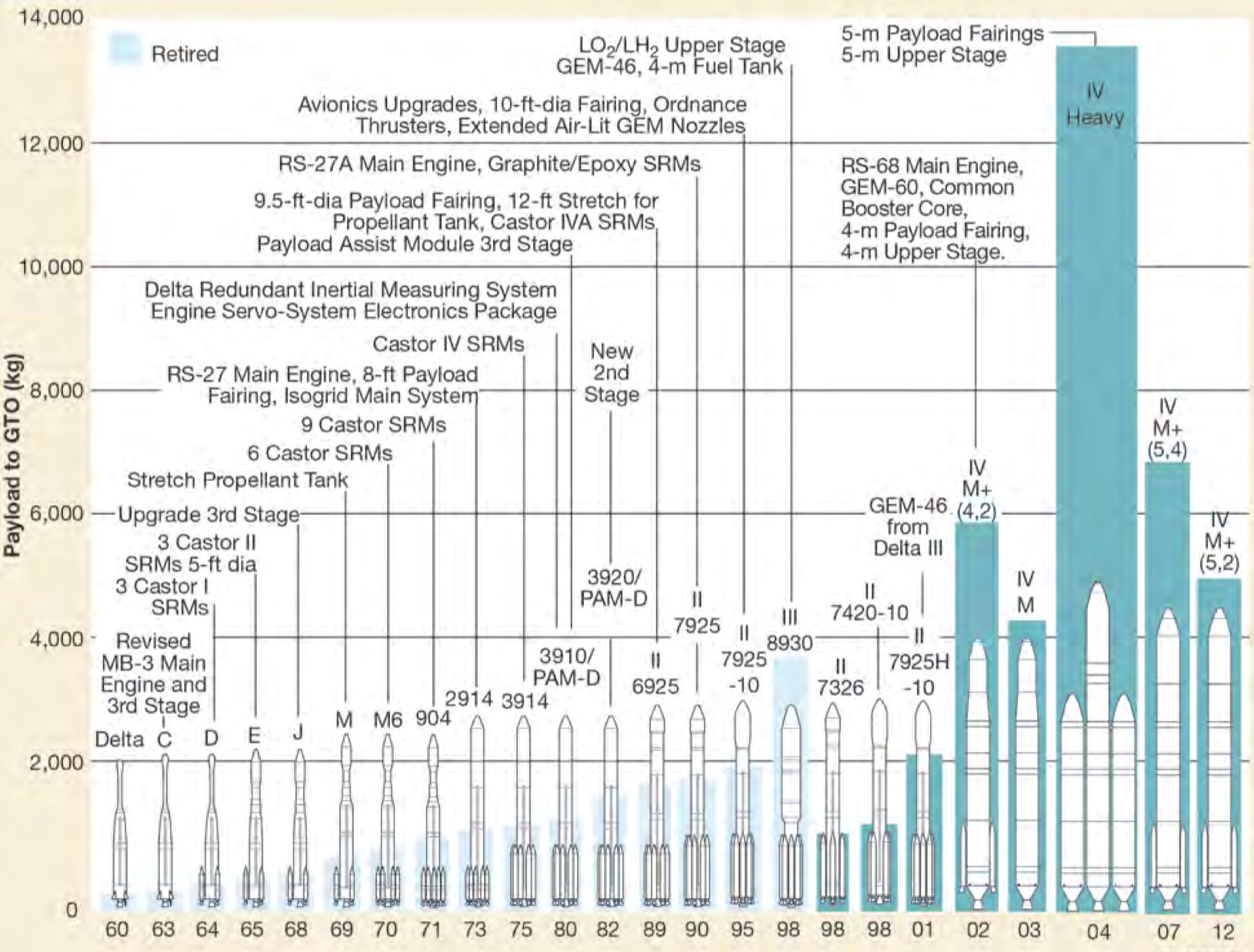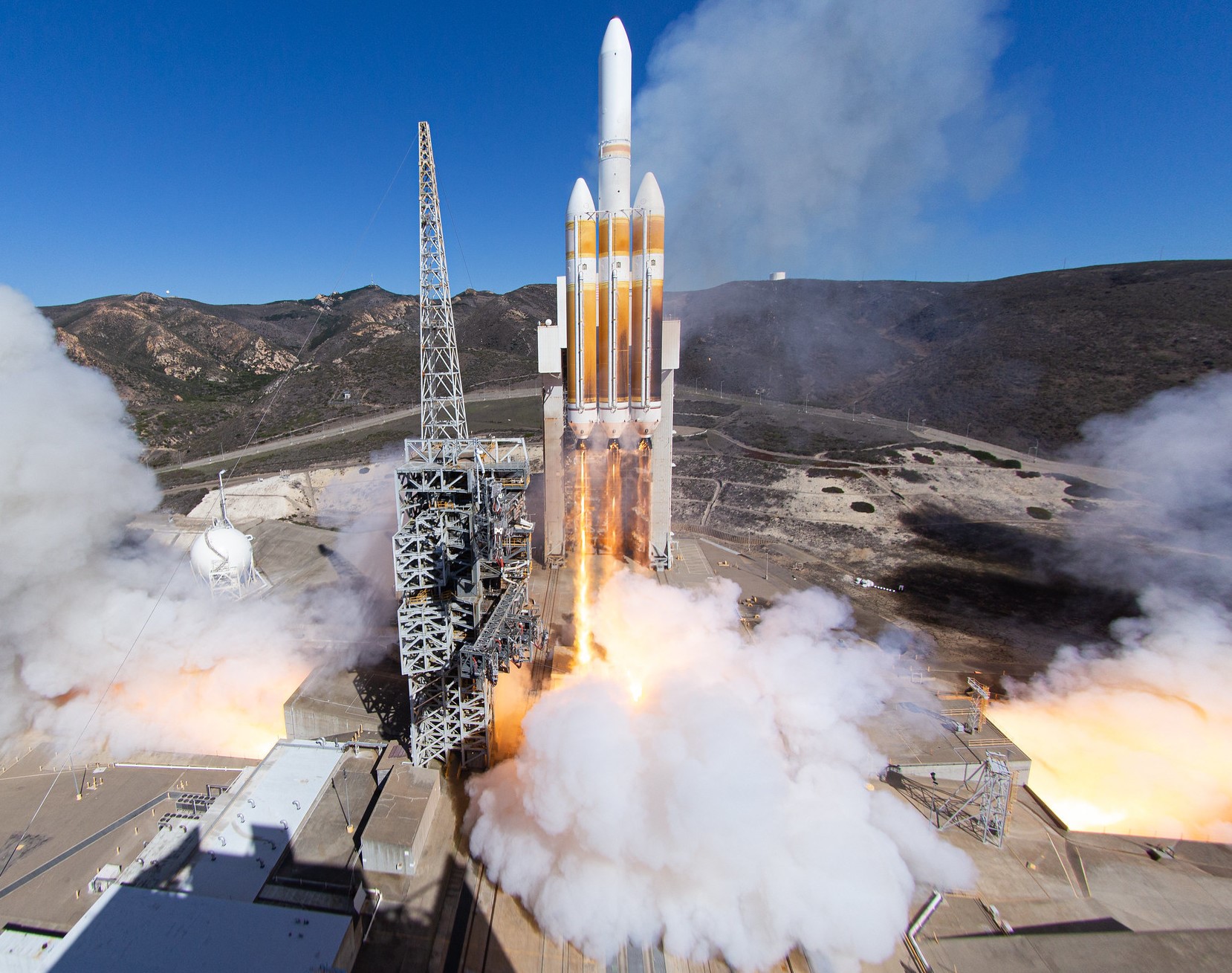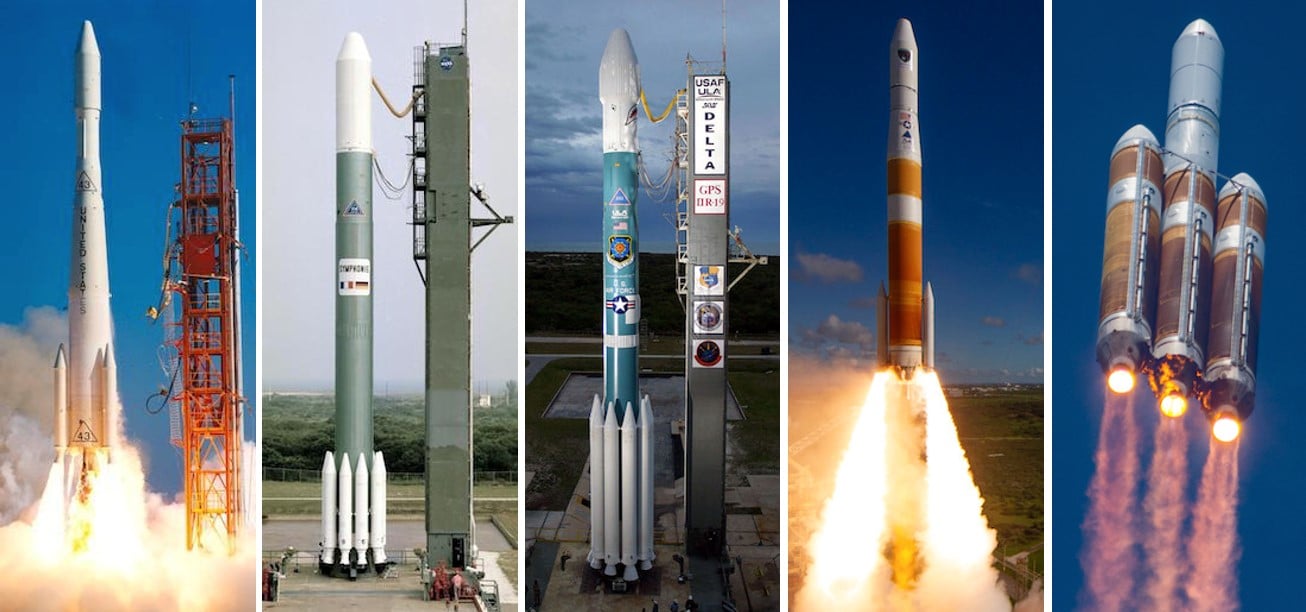
As preparations continue for the final launch of the Delta rocket, United Launch Alliance (ULA) salutes the generations of current and former Delta teammates who designed, built, assembled and launched this storied family of rockets for the past 63 years.
Delta is completing its mission as ULA transitions to the new Vulcan rocket that incorporates some of the best attributes of both Delta and the Atlas fleets to continue assured access to space for the next era.
"While we near the final liftoff, the Delta legacy will live on through Vulcan," said Gary Wentz, ULA vice president of Government and Commercial Programs. "We also take this moment to celebrate the thousands of men and woman who made the Delta program such a success over the decades. We carry their lessons and wisdom with us into the future."
Launch of the Delta IV Heavy rocket carrying the NROL-70 national security mission is planned for March 28 at 1:40 p.m. EDT (1740 UTC) from Space Launch Complex (SLC)-37 at Cape Canaveral Space Force Station, Florida.
The Delta IV Heavy rocket is the pinnacle in our Delta family evolution. In more than six decades of use, Delta launch systems have succeeded through evolutionary design upgrades to meet the growing needs of the user community while maintaining high reliability.
 Initiated in the late 1950s by NASA, the Delta program was derived from the Thor intermediate-range ballistic missile and used Vanguard components as the second and third stages to deliver a payload of 120 pounds (54 kg) to geosynchronous transfer orbit and 400 pounds (181 kg) to low-Earth orbit.
Initiated in the late 1950s by NASA, the Delta program was derived from the Thor intermediate-range ballistic missile and used Vanguard components as the second and third stages to deliver a payload of 120 pounds (54 kg) to geosynchronous transfer orbit and 400 pounds (181 kg) to low-Earth orbit.
When the first Delta rocket was launched, on May 13, 1960, from SLC-17 at Cape Canaveral, Dwight Eisenhower was president, the No. 1 song in the nation was "Stuck on You" by Elvis Presley and a loaf of bread cost approximately 20 cents.
While the inaugural launch was not a success, Delta quickly began establishing a record of excellence by launching the world's first communications satellite, the first weather observatory and NASA's Pioneer and Explorer scientific spacecraft.
The Delta legacy grew with launches of the Tiros and Geostationary Operational Environmental Satellites (GOES) satellites that revolutionized weather forecasting. Delta launches of the first Telstar and Intelsat communications satellites enabled the now-famous TV phrase, "live, via satellite!" The Explorer research satellites provided data about energy fields and particles that could affect communications satellites, while NASA's Pioneer probes undertook a long series of space exploration missions.
The rocket family has a remarkable success rate over six decades of flights, which numbers 388 launches to date. There have been 293 from the East Coast and 95 from Vandenberg Space Force Base, California.
Through the years, Delta became bigger, more advanced and capable of carrying heavier satellites into Earth orbit and around the solar system. Design changes included larger first stage tanks, addition of strap-on solid rocket boosters, increased propellant capacity, an improved main engine, adoption of advanced electronics and guidance systems, and development of upper stage and satellite payload systems.

Delta rockets have grown from 90 feet (27.4 m) in height and a mass of 112,000 pounds (50,800 kg) in the early days to today's towering Delta IV Heavy at 235 feet (71.6 m) tall and weighing 1.6 million pounds (725,750 kg) at launch. Liftoff thrust also increased dramatically from 150,000 pounds (667 kiloNewtons) in 1960 to 2.1 million pounds (9,341 kiloNewtons) today.
The introduction of the Delta II on Valentine's Day 1989 began the Global Positioning System (GPS) era by creating the operational constellation of navigation satellites in space. GPS created a worldwide utility that today touches the lives of people around the globe. Delta II launched four dozen GPS satellites in 20 years of launches to assemble and maintain the network and Delta IV launched seven advanced models in later years.
The beloved Delta II earned its place in history with 155 flights including eight missions to Mars for NASA. The plucky Spirit and Opportunity rovers got their starts by launching to the Red Planet atop a Delta.
Delta II also extended scientific pursuits to the planet Mercury with NASA’s MESSENGER orbiter, to small worlds in our solar system like the NEAR-Shoemaker that landed on the tiny asteroid called Eros, the Dawn spacecraft that explored Vesta and Ceres and Deep Impact that smashed into comet Tempel 1 to study its interior. The twin STEREO probes observed the Sun, the Stardust and Genesis missions returned samples of comet dust and the solar wind to Earth, the Kepler observatory discovered exoplanets in the galaxy and the Spitzer Space Telescope used infrared vision to scan the universe.
The Delta program's commitment to vehicle improvement to meet customer needs culminated in the Delta IV family of launch vehicles, with a wide range of increasing capability.

The Delta IV family of medium-to-heavy launch vehicles became operational in 2002. The first Delta IV launch, of Eutelsat's W5 commercial satellite, took place on Nov. 20, 2002, and the first payload delivered for the U.S. Air Force's Evolved Expendable Launch Vehicle (EELV) program was the DSCS A3 communications satellite on March 10, 2003. ULA successfully launched the first operational Delta IV Heavy on Nov. 10, 2007, carrying a Defense Support Program satellite.
The Delta IV is the final chapter of the Delta family's success story. There have been 44 Delta IV launches thus far, all successful, for the Air Force, Space Force, National Reconnaissance Office, NASA and commercial customers. The triple-barreled Delta IV Heavy became America's trusted heavy-lifter, launching NASA's first Orion spacecraft on an uncrewed flight test and sent the Parker Solar Probe to surf the atmosphere of the Sun.

 Back To Blog List
Back To Blog List



